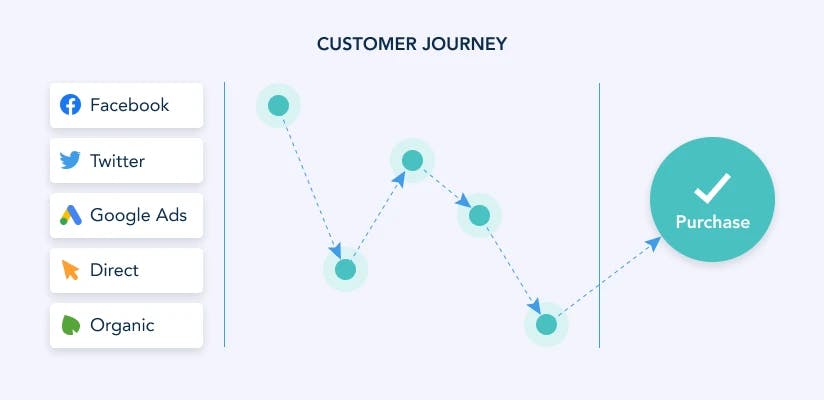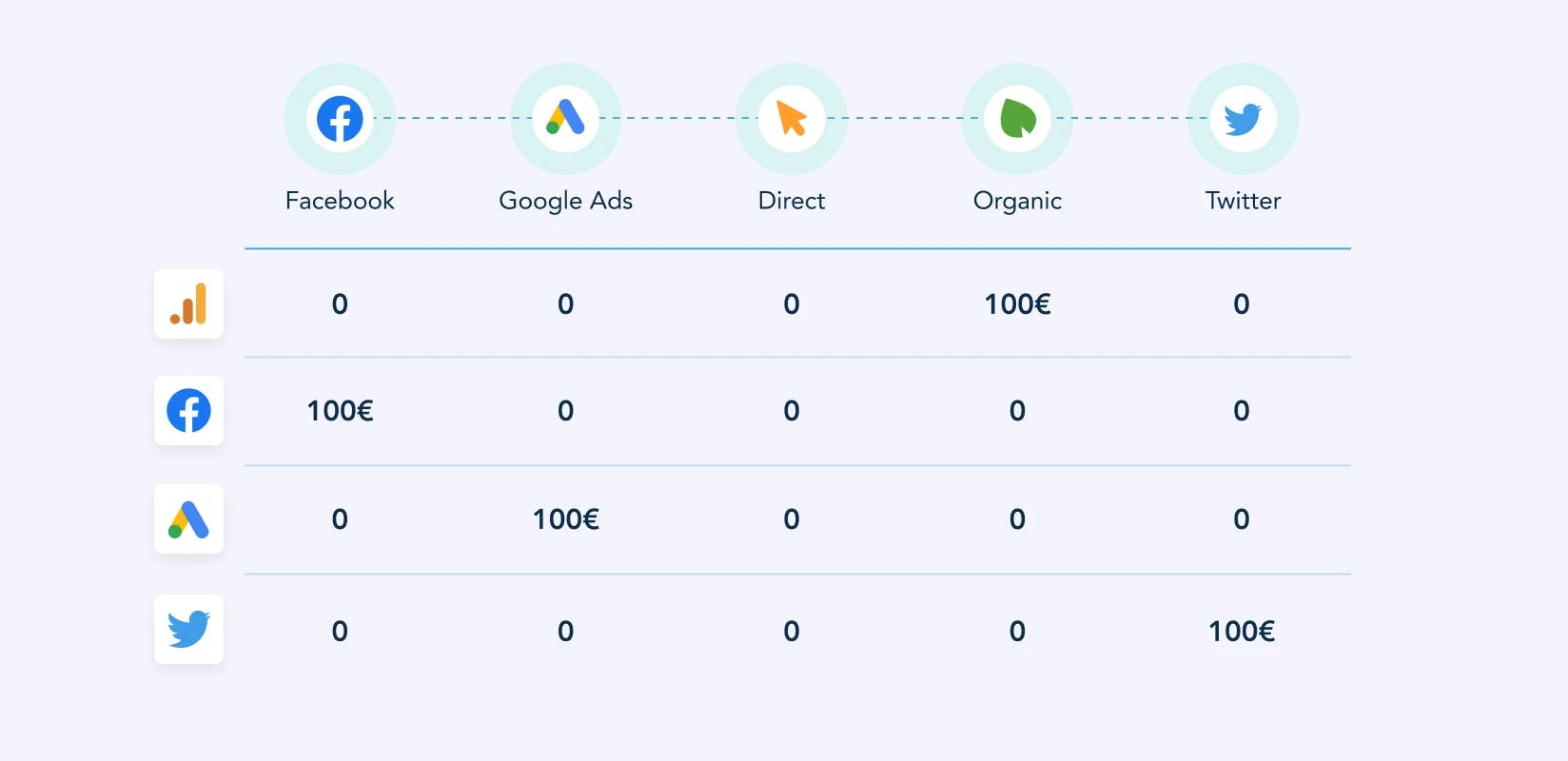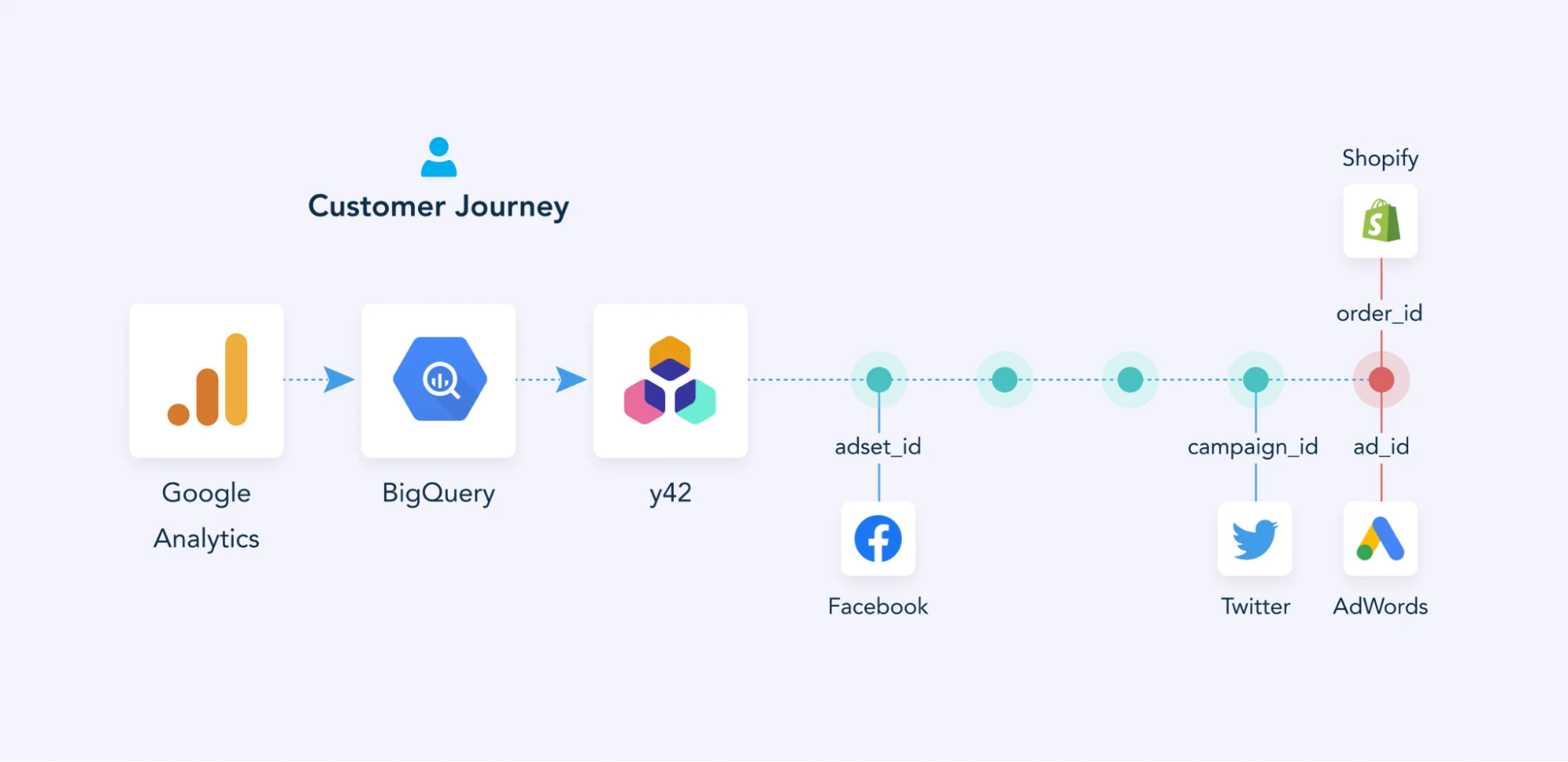What is attribution modeling?
Attribution modeling is a mapping between (online) touchpoints and the specific events or results that you are trying to achieve. A common motivation is the optimization of marketing efforts since attribution helps to determine which efforts yield results and which lead nowhere. While this often means figuring out which paid campaigns lead to an actual sale, attribution is not limited to this use case.In ecommerce, implementing attribution requires you to collect data
- from your ads (clicks, impressions, and spend),
- from your shop (orders and source of traffic),
- and analytics data (to track returning visitors).
Combining this information allows you to trace your customer's journey before purchasing the product. Now, both the marketing spend and order value can be attributed to the individual touchpoints, hence the name marketing attribution.

The importance of attribution modeling in ecommerce
Proper attribution helps businesses focus their marketing efforts on the right initiatives. It is no longer enough to just look at P&L at the end of the month; you need to drill into the cause and effect of the data.
What's more, it is not sufficient to only look into the ads manager of the marketing channels or Google Analytics. With one or two channels, it is still straightforward for advertisers to attribute a conversion to one of the channels. But as soon as online marketing gets scaled up and more and more channels are involved, the question of which channel actually contributed to the conversion is no longer quite so straightforward. Every channel involved in the customer journey will claim the conversion for itself. For ecommerce businesses especially, where marketing spend and conversion rates are often part of the core KPIs, a deep understanding is vital. Marketing attribution is one of the most important tools, enabling you to analyze and then adjust your whole business around that.

This example shows that a purchase with a conversion value of 100€ will be claimed by all channels that have led the customer to the shop, since the pixel implemented on your shop will track this conversion for the ad providers. Checking the ads manager of all contributing channels and then summarizing the individual sum of revenue will result in a revenue sum higher than 100€. A look into the sales by marketing channel dashboard in Google Analytics will show that Organic Search has generated 100€, since Google Analytics uses the last-click attribution by default. Hence, we have an issue: how to accurately allocate the 100€ conversion value to the contributing parties.
In addition to helping with allocating the marketing budget, attribution can also be used to extract the margins by product or campaign. Another example is that it would allow you to calculate a margin per customer and therefore increase the accuracy of your customer lifetime value calculation. Ultimately, marketing attribution will help you to understand in more detail the most important value drivers of your online business and will allow you to steer your business towards higher profitability.
The complexity of comprehensive attribution
Implementing attribution modeling for most businesses is not a plug-and-play service; it requires decisions in the context of a business and additional technical implementation, such as:
- Choosing the attribution type. There are many different types of attribution models and there is not one catalog that ultimately defines them.
- Integrating good attribution data. Attribution data usually comes from many different sources and the data integration needs to be set up correctly to avoid bad input data.
- Implementing attribution modeling. The data modeling for many attribution models can be very complex and you often need advanced SQL skills for it.

Choosing the right attribution type for ecommerce
The first hurdle for most people is that they don’t know which type of attribution model is correct for them. When you want to connect your revenue to your marketing spend, there are many different ways of doing this and each method works differently.
You need to decide which touchpoints you want to include in your model. When you do last-click attribution, only your customer’s very last touchpoint before they purchased will be considered for your attribution model. This means that only the ad that they clicked on during the purchase session will be attributed to any revenue. If you decide to consider more than one touchpoint, you need to choose an attribution window. A 30-day attribution window means that all touchpoints 30 days prior to the purchase will get a contribution share of that purchase.
Integrating good attribution data
After you have decided on the overall type of attribution modeling, you will need to make sure that you have the required technical setup for it. When you want to connect your revenue data to your marketing data, this means that you need to collect a lot of data from both sides and make sure this data is kept clean at all times.
The most critical part of this data is your UTM tags. UTM tags are the important link between your revenue and your marketing efforts. When a customer clicks on your ad and is forwarded to your online shop, part of the URL is your UTM tags which let the shop know which ad and campaign the customer came from. This means that you need to make sure that all campaigns are associated with the correct UTM tags on the marketing side, but also, that all your shop visits save these parameters correctly.
This is the part that we see many companies struggle with the most. Often, they have put UTM tags in place in the past, but have never put in the effort to keep them clean. This leads to bad input data for your attribution model. So when you are thinking about doing marketing attribution in the future, make sure that you have a clean tagging setup.
Implementing attribution modeling for ecommerce
The last critical point for your marketing attribution is your modeling setup. Once you have collected all the input data and made sure that the data is clean, you need to do the modeling itself. This usually happens in your data warehouse where you bring all your data together. Overall, there are two steps involved in this:
- Firstly, you need to get your raw data into the data warehouse. This often means streaming data from your ad providers, your Google Analytics instance, as well as your revenue data into the data warehouse of your choice. Some companies already have this setup for their regular reporting.
- Next, you need to build the data models which actually implement your attribution logic. This depends a lot on the different types of attribution, but most attribution models contain quite complex logic and require advanced SQL skills to implement them correctly.
We hope we have been able to give you a good primary understanding of marketing attribution and have helped you understand why it is important—as well as hard—to do right.
Category
In this article
Share this article

